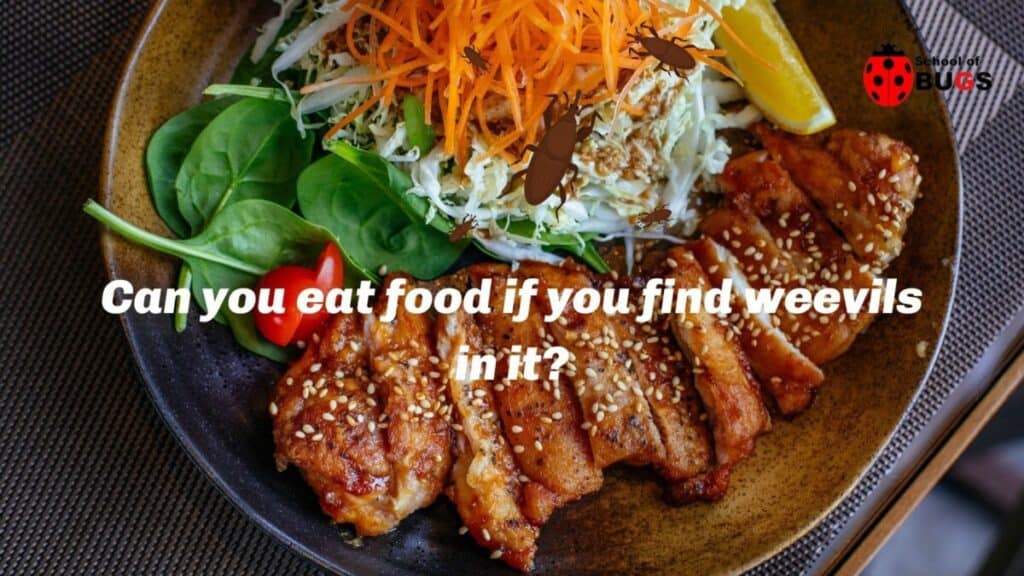
Weevils are tiny beetles that feed predominantly on grain crops. They are often found living in dry foods like four, rice, oats, and other grains in your pantry.
While eating weevil-contaminated food is not harmful to humans, if you want to eliminate a weevil problem from your kitchen you will need to throw out all of the contaminated food so they don’t spread throughout the rest of your pantry.
Weevils are a very common kitchen pest that you are likely to encounter at least once. Luckily, it is possible to manage a weevil infestation on your own by following a few simple steps.
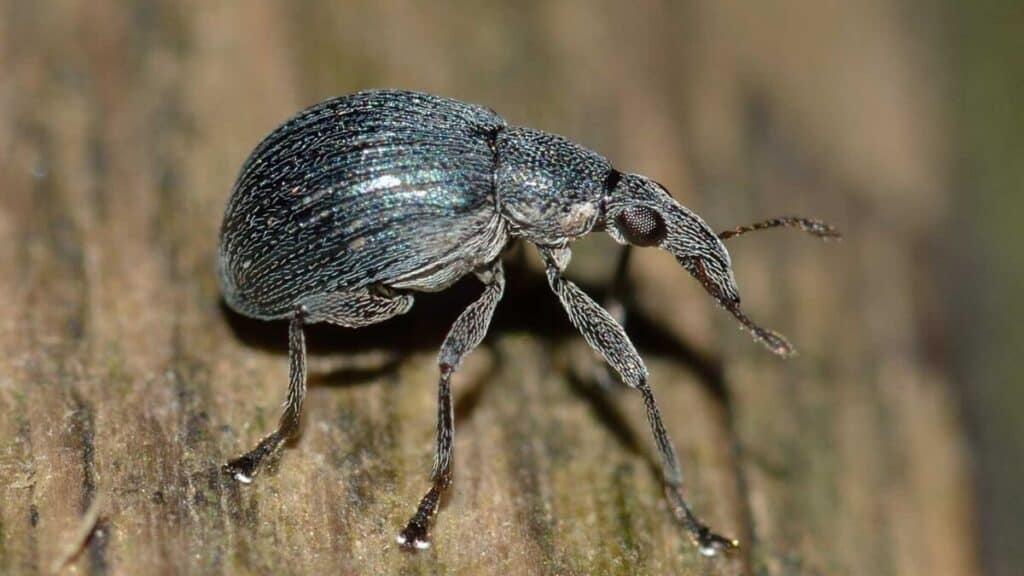
There are also lots of preventative measures you can put in place to stop weevils from spreading throughout your pantry.
This article includes information about:
- What weevils are and how to recognize them
- Where weevils come from
- Common signs that you have a weevil infestation
- How to get rid of weevils
- How to prevent keep weevils out of your kitchen in the first place.
Let’s dive in!
What are weevils?
Weevils, also sometimes known as ‘flour bugs’ are tiny beetles that live in and feast on grains and legumes like flour, oats and rice, corn, beans, nuts and seeds.
Different kinds of weevils live and feed on different grains and they are all slightly different in size and color.
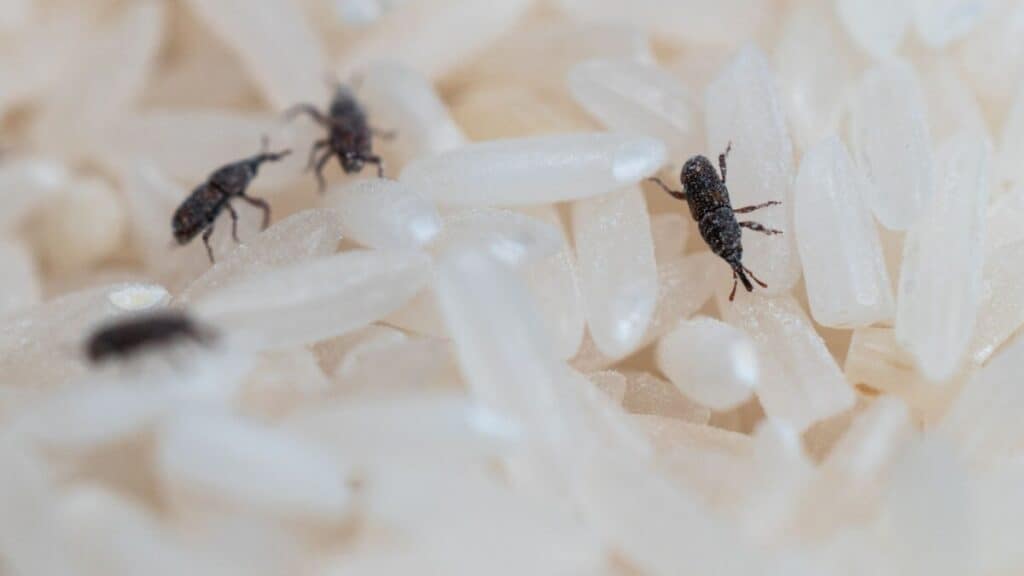
While weevils have the potential to cause massive crop damage in the fields, fortunately, they will not wreak too much havoc if they set up shop in your home.
Despite this, weevils in the home are still a nuisance and, understandably, you may want to be rid of them as soon as possible.
Where do weevils come from?
Have you ever wondered how weevils come to live in your food, especially if you find them in a sealed package?
Weevils feast and live on grain crops and produce. The females lay their eggs inside seeds or grain kernels and seal their eggs inside.
When the egg hatches, the weevil larva feeds on the seed or kernel it was laid in until it reaches maturity the fully-grown weevil then chews its way out from the sealed seed and the cycle is repeated when that weevil mates with a male.
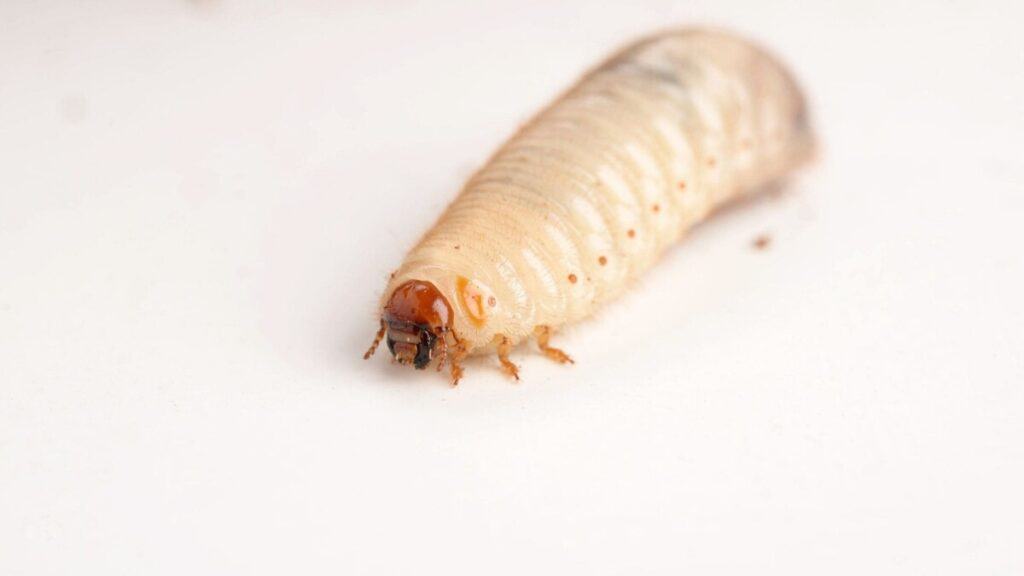
This is how weevils can end up in packaged foods. They are often already living inside the seeds or kernels when the grains are harvested.
Is it safe to eat weevils?
If you have ever discovered weevils in your kitchen – and are concerned you may have eaten one (or a few) by accident, you may be wondering whether they are harmful to eat.
Weevils are not toxic to humans and you will not experience any illness or negative side effects if you happen to ingest them.
Any food that is infested with weevils is also completely safe to eat, though naturally people can be squeamish about the idea, which is why most weevil-infested food gets thrown away.
While it is necessary to dispose of bags of flour or oats if you discover weevils inside them, it is actually possible to salvage some weevil-infested food, such as dried beans and legumes.
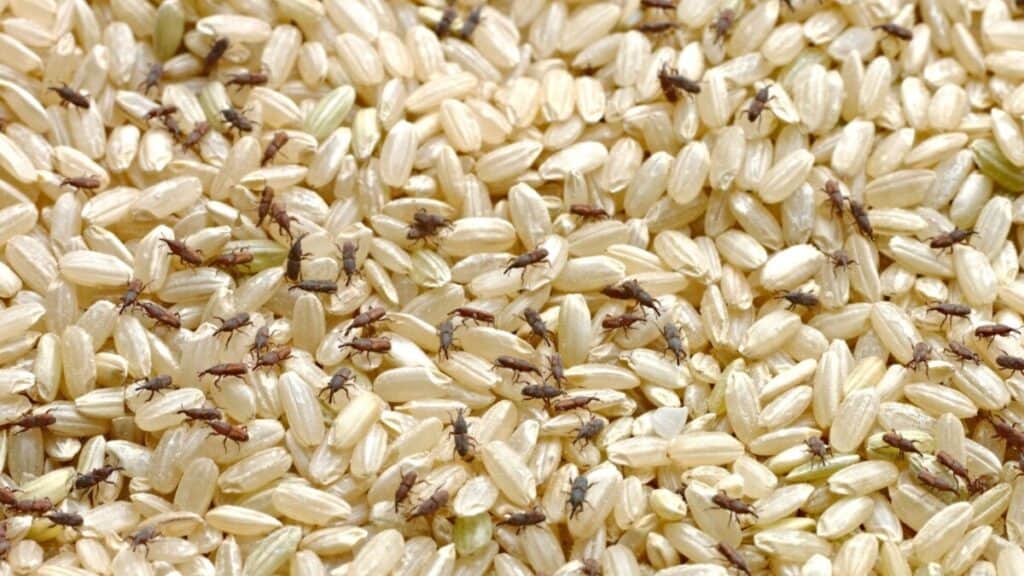
Simply soak the beans or legumes in water. Any weevils living in the pulses will float to the top of the water and can be fished out. The beans or legumes will be weevil-free and completely safe to eat.
So, the bottom line is don’t worry if you think you may have accidentally eaten weevils. It’s all just extra protein!
Common signs that you have weevils
There are a few things to look out for if you’re wondering whether you have this common pantry pest. If you notice the containers your grains are stored in have a dusty or web-like coating in or around them this is a big red flag.
You may also even notice the tiny black insects on your shelves or cupboards throughout your kitchen. Once fully grown, weevils are also relatively easy to spot in light-coloured grains like flour and rice.
What’s the difference between weevils and pantry moths?
Weevils can sometimes be mistaken for another pest that commonly plagues kitchen pantries. Pantry moths also hatch their larvae inside grain produce and can take up residence in your kitchen pantry.
Pantry moth larvae resemble tiny white maggots, but they are actually caterpillars. Weevils on the other hand, are small black insects.
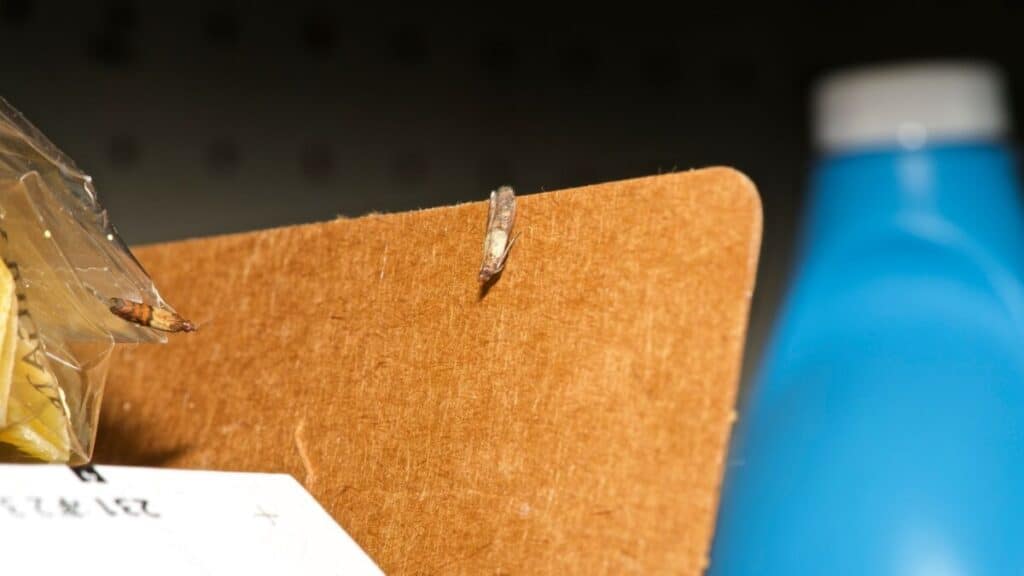
Regardless of whether you have a pantry moth or weevil infestation on your hands, the steps to take to get rid of them are the same, so let’s have a look at what to do if you discover weevils lurking in your pantry.
What are the different kinds of weevils?
There are between 50,000 and 97,000 types of weevils, but there are some common ones that end up in produce sold in supermarkets.
The most common types of produce weevils are rice weevils, grain weevils, maize weevils, and wheat weevils.
Rice weevils
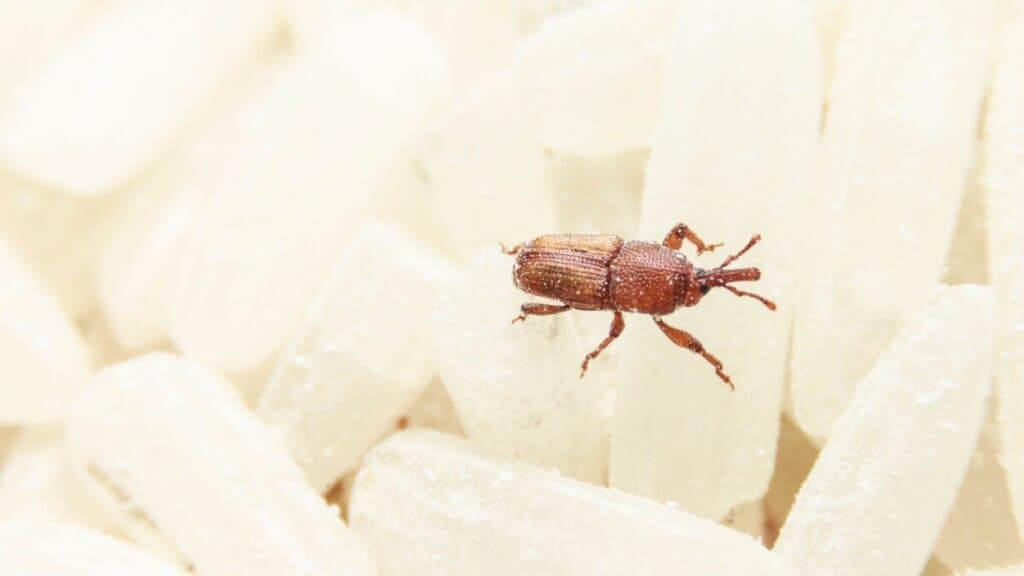
Rice weevils are brown and thin and, as their name suggests, feed on rice grains, though they also feed on wheat and maize.
Grain weevils
Grain weevils, also called granary or wheat weevils are darker in color and commonly infest grain and cereal products.
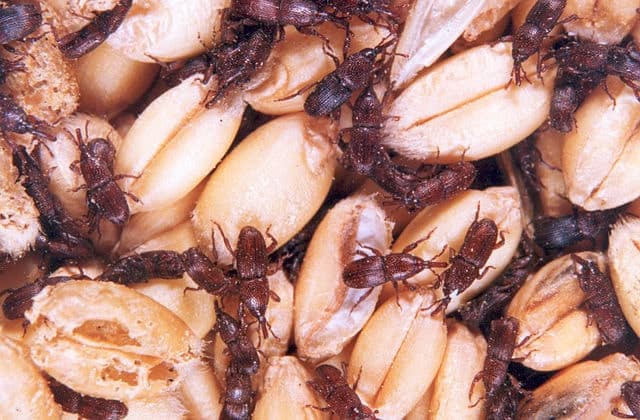
Maize weevils look similar to rice weevils and the two are often mistaken as the same breed, however maize weevils are slightly larger than rice weevils and feed on maize crops.
Regardless of the specific type of weevil and whatever type may be in your kitchen, the strategies to control your weevil problem are all the same.

What to do if you find weevils in your food
If you discover weevils lurking in your pantry items you need to give your kitchen a thorough deep clean.
- Throw out all of the contaminated food. Even if you can’t see any other weevils where you may have seen on, it doesn’t mean that no eggs or larvae are living inside the grains.
- Wipe down all of your cupboards with hot, soapy water.
- Vacuum your cupboards and the rest of your kitchen for good measure.
- Get rid of any other packaging that your product came in. Weevils could still be hiding in packaging like cardboard boxes.
What else can I do with weevil-infested food?
If you just can’t stomach the idea of eating food that contains these little beetles (and who could blame you?) but you are also uncomfortable with the idea of wasting food, why not put the infested produce to good use?
You can use contaminated grains like oats and seeds to make bird food. The birds will also probably be glad of the extra protein! You could also create a heat pack using rice or beans.
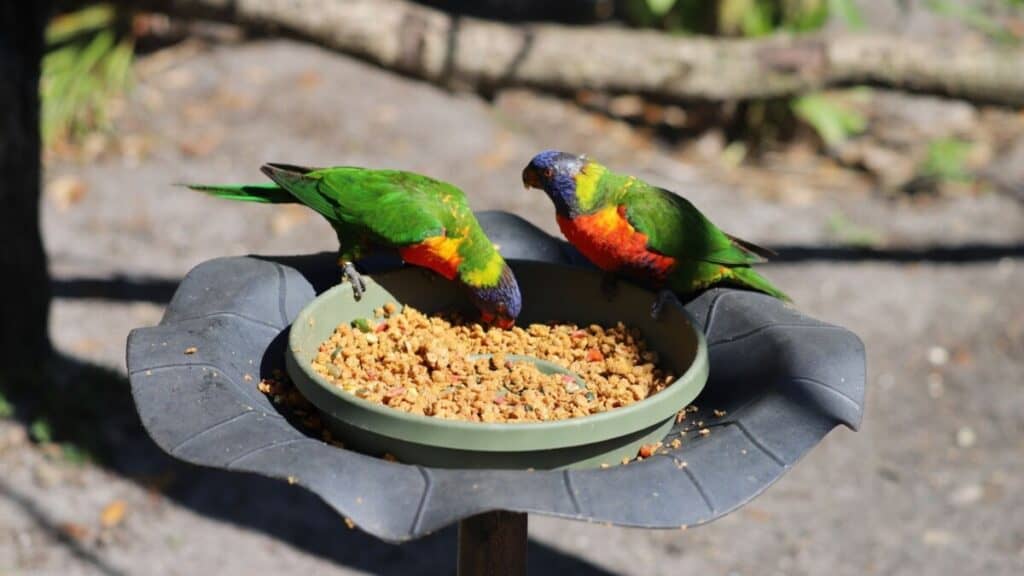
How to keep weevils out of your food
Though it’s always possible to guarantee weevils, there are some steps you can take to stave off these beetles.
Freeze unprocessed grains
Weevils may already be living in unopened packets of flour, oats, rice, barley and other grains or nuts.
When you bring this product home from the store, instead of putting them away in your pantry store them in your freezer for at least one month.
This will kill any weevil eggs or larvae lurking in your food. You can also store this product in your freezer permanently to prevent future infestations if you like.
Store food in air tight containers
You should also make sure that all of your food stuff that is possible homes for weevils are stored in airtight containers to stop any weevils that may already be in your pantry from spreading.
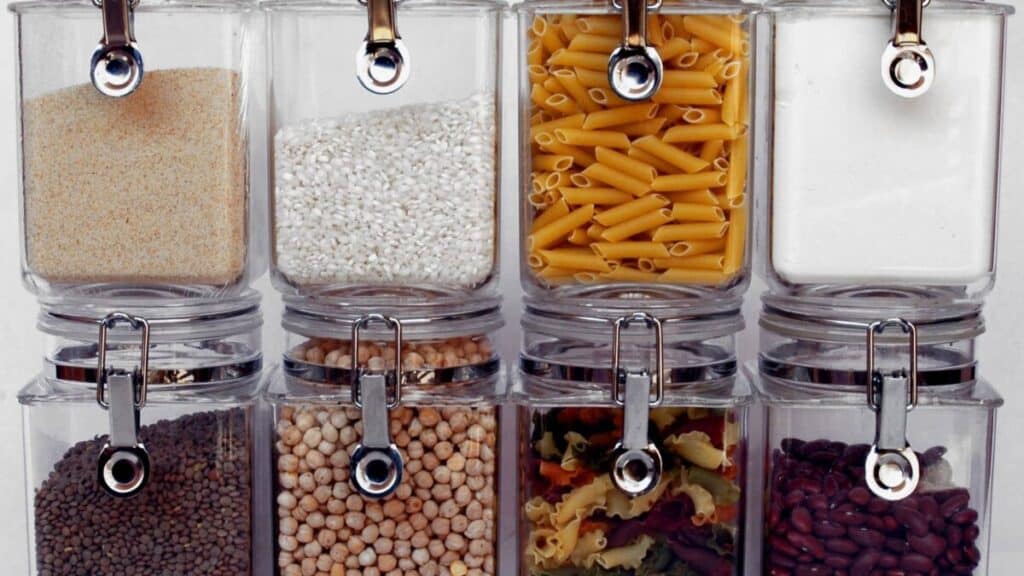
Grain weevils can chew through paper packaging so airtight plastic or glass containers are the best options for storing your unprocessed dry goods.
Clean your pantry regularly
It can take a while before a weevil infestation makes itself known, so you should give your pantry a monthly clean and keep an eye out for any signs that weevils have taken up residence in your pantry items.
Wipe down any cracks, holes, and crevices with warm soapy water. Wiping down shelves with white vinegar may also help to get rid of weevils and other pests.
Place peppercorns around your pantry
There are some reports that peppercorns can help to repel weevils. Simply fill some small bags with loose peppercorns and place them amongst your pantry shelves to help keep weevils at bay.
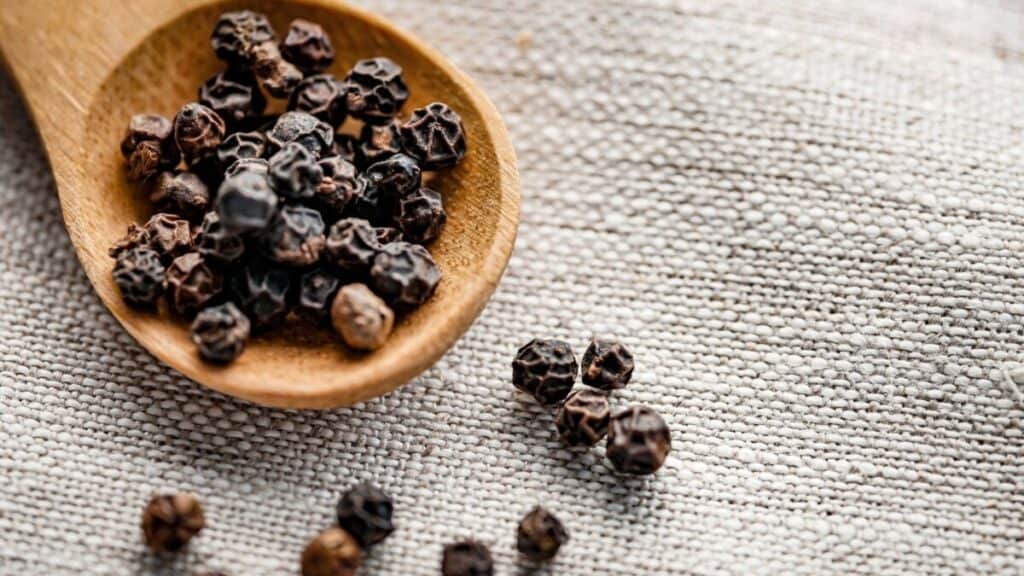
Bay leaves may also help to keep pantry moths at bay.
Check products before you buy them
Unfortunately it’s very easy to bring weevils into your home from the store.
If you are worried about bringing weevils home you can check flour, rice and other grain packaging at the supermarket for any signs including tine holes, webs or dust.
Conclusion
Weevils are not dangerous to humans and no harm will come to you if you eat them.
However, these insects are a pest so if you discover them in your pantry you should take steps to eliminate them before they have the chance to take over.
Alright, that’s it for this article, here are a few hand-selected articles that you might also find interesting reads:
Is it Safe to Eat Food after Ants Have Gotten to It?Fly in My Cooking Pot – Here’s What To Do Next…
What do stink bugs eat? Foods You Should Avoid Keeping At Home
Recent Posts
Tiny Black Bugs in Bathroom NO WINGS: What They Are and What to Do!
Finding tiny black bugs in your bathroom can be uncomfortable, to say the least. Especially if they are persistent, or they appear in very large numbers, which they often like to do. When it...
Tiny Black Bugs in Plant Soil - What Are They & What To Do About It
A short horror story: You get a new houseplant. You do your best to take care of it. You’ve ensured that it has the right soil, the right amount of sun, it gets enough water. And then one day, you...

